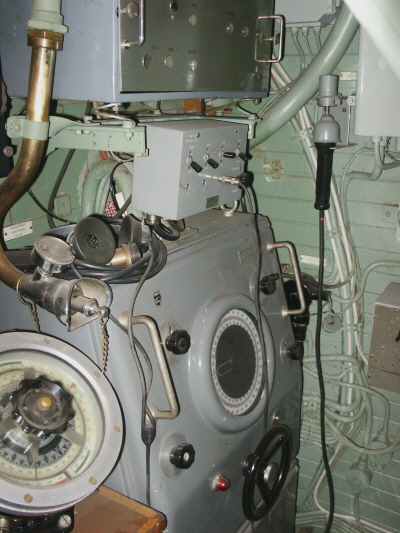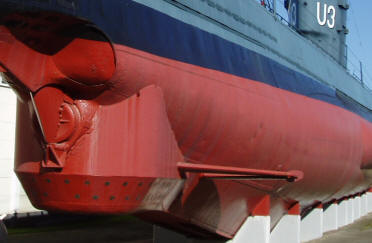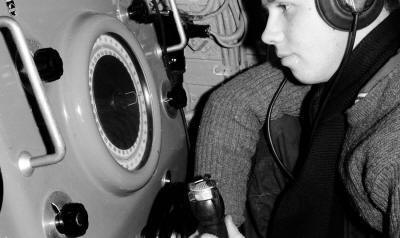Sonar operator
The sonar men resided in the sonar room listening for sounds
in the water around the submarine.
A trained sonar
technician could through listening recognise different sound
sources for instance the difference between turbine and
diesel machinery. He could identify different types of
propellers.
The bearing could be defined with an accuracy of
one degree. To establish target distance you had to plot and
perform calculations.

U3. Control unit for passive sonar. Photo U3 archives.
The sonar had 48 microphones arranged in a horseshoe configuration in the
sonar balcony. The microphones were connected to the sonar unit in the sonar
room. A wheel facilitated the
technician to decide listening direction.
You could also listen and find
direction in the manoeuvring place in the fin.
Here you can listen to sound classified as a 3 bladed 120 rpm
cavitating
propeller.

U3 Sonar balcony. Photo U3 archives.
U 3 also had an active sonar used for finding the distance
to the target. It could be compared with an horizontal
echosounder. Soundpulses could be varied between 10 to 15
kHz.
The active sound generator was located in the forward
part of the fin. This unit was rarely used as it revealed
the existence of the submarine.
Listen to the ping from an active sonar.
Onboard there were 4 sonar technicians working 2 and 2 in the narrow sonar shack. The carried ships
number 5-8. Snr 6 also served as helmsman while Snr 7 and 8
served in the wardroom and petty officers mess.

U3 Sonar operator, conscript Boström, in action. Photo Rune Nilsson